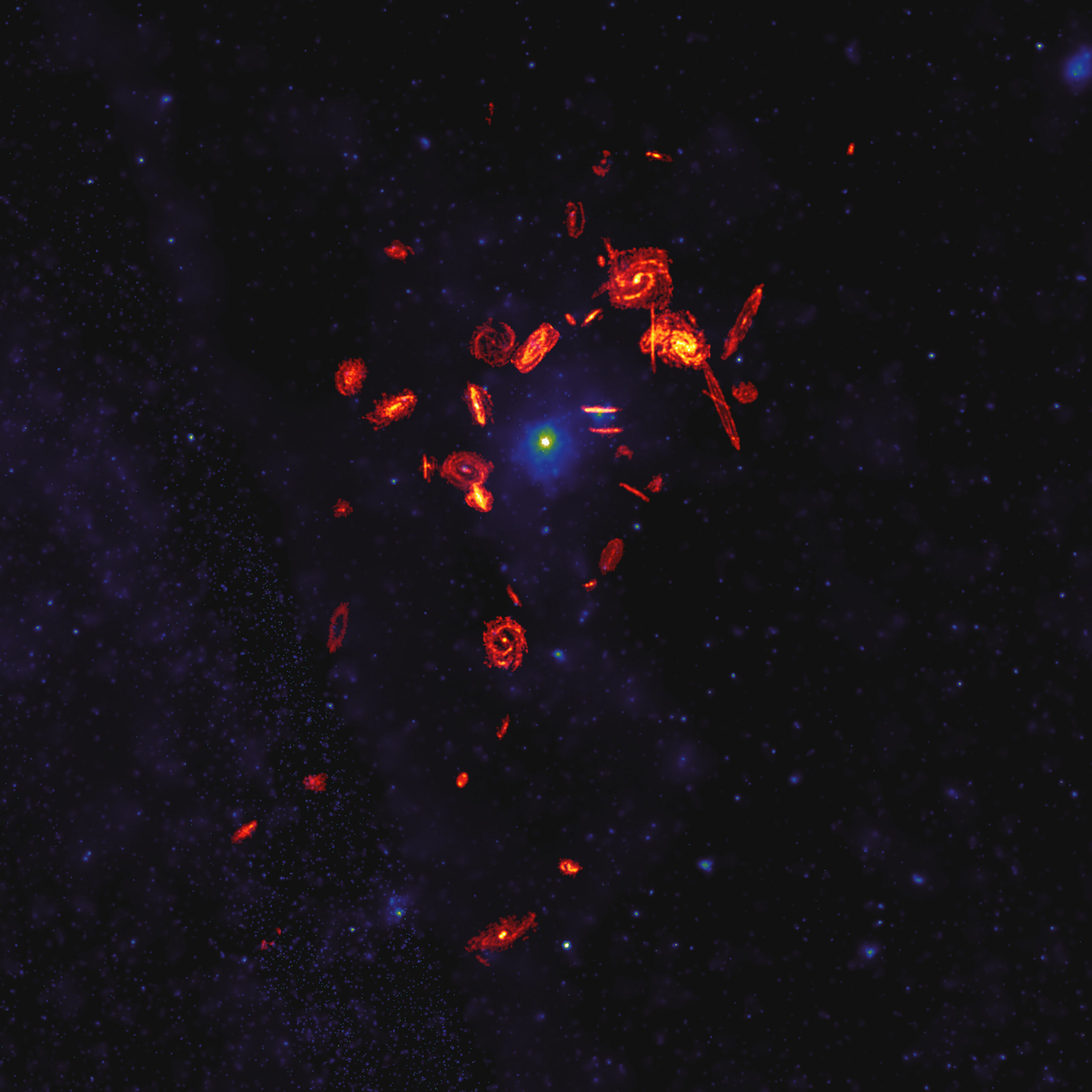Astronomers studying the nearby universe with the Atacama Large Millimeter Wave Array
In their work, scientists studied the Virgo cluster- a cluster containing from 1,300 to 2,000 galaxies. Astronomers paid special attention to the environment of the cluster, namely the presence of carbon monoxide in it within the framework of the VERTICO. project.
“We know that galaxies are dying because of theirenvironment, and we want to know why, ”said Toby Brown, Research Fellow at the National Research Council of Canada and lead author of the article. "VERTICO helps us understand what physical processes affect molecular gas and how they determine the life and death of a galaxy."
 In this composite image, radio wavesALMA observations of the molecular gas disks of VERTICO galaxies are increased by a factor of 20. They are superimposed on an X-ray image of hot plasma in the Virgo cluster. Courtesy: ALMA (ESO / NAOJ / NRAO) / S. Dagnello (NRAO) / Böhringer et al.
In this composite image, radio wavesALMA observations of the molecular gas disks of VERTICO galaxies are increased by a factor of 20. They are superimposed on an X-ray image of hot plasma in the Virgo cluster. Courtesy: ALMA (ESO / NAOJ / NRAO) / S. Dagnello (NRAO) / Böhringer et al.
Galaxies are large clusters of stars, and theirbirth, evolution and death depend on where they are in the universe and how they interact with the environment. Clusters of galaxies represent some of the most extreme environments in the universe, making them especially interesting for scientists studying the evolution of stellar systems.
As part of the VERTICO project, scientists observed 51galaxy in the Virgo cluster in high resolution. They found an environment so extreme and inhospitable that it could prevent entire galaxies from forming stars in the process. “The Virgo Cluster is the most extreme region of the local Universe, filled with million-degree plasma. Galaxies move at tremendous speed, violently interacting with each other and the environment, forming a real cemetery in the cluster,” explains the author of the study. — Gas disappears from galaxies when they move through hot plasma. Most of all, it looks like someone is sweeping it out with a huge cosmic broom.”
Read more
A huge "black hole" was found in the middle of the Pacific Ocean. The network is wondering what it is
Divers have found the treasures of the legendary "Island of Gold". Artifacts cost millions of dollars
AI solved a biological problem that scientists have been battling for 50 years